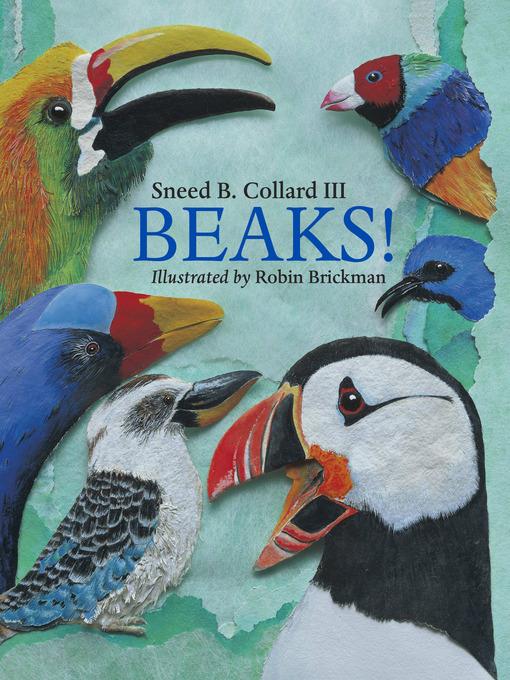
Beaks!
فرمت کتاب
ebook
تاریخ انتشار
2020
Lexile Score
970
Reading Level
2-3
ATOS
4.2
Interest Level
K-3(LG)
نویسنده
Robin Brickmanناشر
Charlesbridgeشابک
9781632899064
کتاب های مرتبط
- اطلاعات
- نقد و بررسی
- دیدگاه کاربران
نقد و بررسی

August 1, 2002
K-Gr 4-The intricate characteristics of a variety of birds' beaks are presented skillfully through words and vividly painted, cut-and-sculpted-paper illustrations. The habits of birds and the information on how their beaks' composition allows them to eat are truly fascinating. The author explains that beaks can also help birds build nests (bowerbirds) or dig (bee-eaters). Some beaks change colors as the bird ages (seagulls) or during different seasons. The clear text is easy to follow, and students will enjoy hearing it read aloud or find it useful for reports. The lively style will facilitate rich discussion, while teaching the students the scientific facts of these feathered friends. Some of the featured species, such as song sparrows, are common, but others are quite exotic. A worthwhile resource for libraries and classrooms.-Barbara L. McMullin, Casita Center for Technology, Science & Math, Vista, CA
Copyright 2002 School Library Journal, LLC Used with permission.

July 22, 2002
K-Gr 4-The intricate characteristics of a variety of birds' beaks are presented skillfully through words and vividly painted, cut-and-sculpted-paper illustrations. The habits of birds and the information on how their beaks' composition allows them to eat are truly fascinating. The author explains that beaks can also help birds build nests (bowerbirds) or dig (bee-eaters). Some beaks change colors as the bird ages (seagulls) or during different seasons. The clear text is easy to follow, and students will enjoy hearing it read aloud or find it useful for reports. The lively style will facilitate rich discussion, while teaching the students the scientific facts of these feathered friends. Some of the featured species, such as song sparrows, are common, but others are quite exotic. A worthwhile resource for libraries and classrooms.-Barbara L. McMullin, Casita Center for Technology, Science & Math, Vista, CA
Copyright 2002 School Library Journal, LLC Used with permission.

August 1, 2002
K-Gr. 3. This brightly illustrated, large-format volume invites children to consider the varying physical qualities and purposes of different birds' beaks. Each spread spotlights one or two species and how they use their beaks. A brief line of text, printed in large type and conveying an essential idea, is followed by a paragraph of information about the bird shown in the illustration. For instance, the section on macaws begins, "heavy beaks crush," and explains how the macaw's strong beak enables it to eat nuts that other birds cannot crack. This arrangement offers a brief introduction for younger children and a longer one for older ones. Focusing on the narrow topics of beaks allows Collard to be quite specific, but it also offers opportunities to introduce more general principles such as evolution. The term "paper collage" doesn't convey the three-dimensional quality of Brickman's striking pictures. Constructed of painted and cut papers, they give the illusion of depth in the picture plane as well as rounding shapes in the figures of individual birds. Short lists of recommended books and Web sites round out this attractive and informative volume.(Reprinted with permission of Booklist, copyright 2002, American Library Association.)

























دیدگاه کاربران